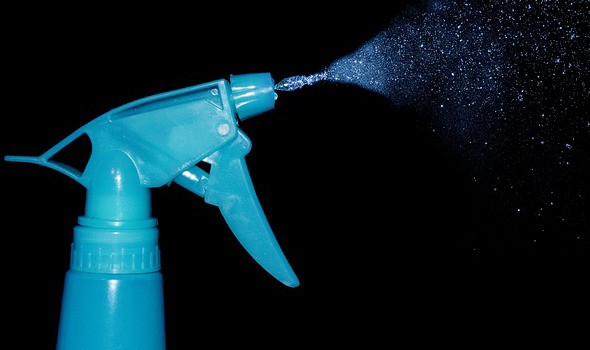
Hazardous Products for Birds In The Home
Is Your Home Parrot Safe?
Some detergents and household products we commonly use in our homes can be hazardous products for birds even if they are safely retired to their cage while these are being used. The delicate respiratory tract of birds can be affected by some of these toxic compounds long before humans have a reaction to them. Make sure everyone in your family understands what can be potentially dangerous for your bird!
Hazardous Products for Birds
This is by no means a complete list of dangerous items commonly found in your home that could potentially be hazardous or toxic to your birds. Recognize a few of these items? They only took a few minutes to find in a home and photograph, so just imagine what else could have been added!
A – Toxic fumes from over-heated nonstick- coated cookware and utensils
B – Rodent poison -pest control
C – Bleach–boric acid, chlorine
D – Paint Thinners, Solvents
E – Incense
F – Fire extinguisher ( some contain dangerous fumes)
G – Spray paints, paints and stains
H – Teflon raclette stove, Teflon bread maker
I – Teflon-coated hair dryer
J – Stained glass
K – Insecticide, ant syrup paste,flea products
L – Hair spray, deodorant sprays, perfumes
M – Room deodorizer
N – Shoe polish and leather protector spray
O – Drain cleaners, CLR
P – Furniture cleaner, PineSol
Q – Alcohol
R – Oven cleaner
S – Electrical cords or outlets, ceiling fans
T – Candy
U – Chocolate
V – Cigarette smoke or butts, matches
W – Coffee
X – Salt should not be part of the bird’s diet
Y – Sugar should not be part of the bird’s diet
Z – Artificial food colouring should be excluded from your bird’s diet
A2- Toxic plants (see list)
B2- Plug-in room freshener
C2- Frayed rope
D2- Paint
E2 – Scented candles
F2 – Frying pan – toxic fumes from overheated non-stick-coated cookware and utensils
Also keep in mind items such as pesticide treated wood for perching or branches from a potentially toxic tree species
Other Areas of Concern
If you’re going to train your bird or let it exercise outside of its cage make sure the space is bird safe. Close all doors, windows and other openings like fireplaces and vents. Until your bird has learn to govern its flight, close curtains or blinds to protect it from colliding with a window.
If you have an aquarium, make sure it’s covered. Turn off or cover any fans. Do not allow birds in the kitchen while cooking is taking place. Supervise your bird’s activities to ensure it doesn’t gnaw on electrical wires, toxic substances or your favorite sofa! If you have plants, check with your vet to see that they are not poisonous. Keep your bird away from all other pets — especially cats and dogs.
What about their home? Have you considered Heavy Metal Toxicity? Want to learn more, read our article on Heavy Metal Exposure in Birds.



